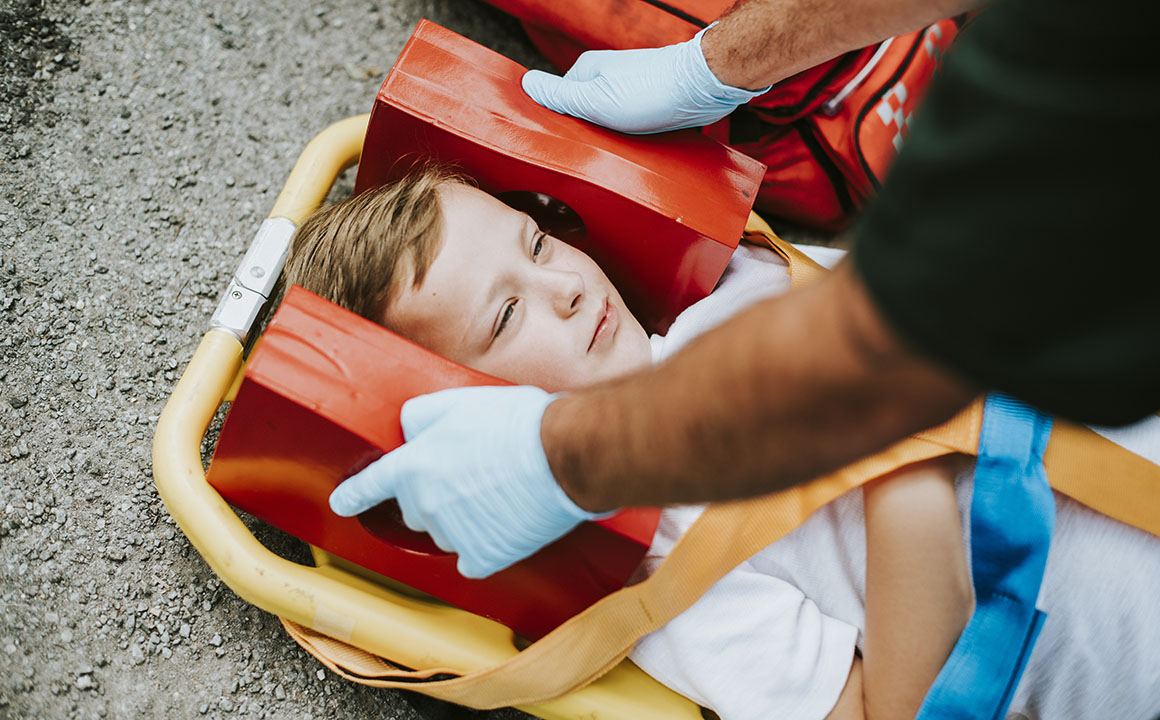Be Prepared for Emergencies and Help a Child Until the Paramedics Arrive

Whether you are a parent, a licensed healthcare/education professional or a teenager trying to earn some money on the side, taking care of a child can be quite a challenge.
There are a plethora of uncomfortable and challenging situations that people who take care of children face every day. Unfortunately, running on the street, carelessly engaging their surroundings, or eating or drinking without paying attention is just how children are. Therefore, they often trip and fall, choke on their food, or get lost for a moment. Luckily, these everyday events resolve quickly and painlessly in most cases.
However, things can sometimes get out of control, and you may have a serious, life-threatening situation on your hands. It is best to be acquainted with how to prevent incidents and react adequately if something happens until paramedics come and take over.
These are some basic recommendations on what to do to feel safer and more prepared in emergencies. We’ll cover both preventive measures as well as how to handle the situation itself if necessary.
The adequate reaction comes from adequate preparation
Staying calm in a difficult situation is hard. Whether you are a parent or a professional caretaker, knowing what to do in different emergencies can help you provide the proper care for the child. It can also help you stay calmer and feel more confident, which can when push comes to shove, make all the difference in the world.
The best course of action is to educate yourself on emergency maneuvers. If trained medical professionals teach you how to provide first aid for your child, you will be able to prevent adverse outcomes until professional help arrives. Also, if you are a professional caretaker, having medical skills that prove you can appropriately react in an emergency will be a great asset.
Medical training comes in handy with most types of accidents, such as cuts, bone breaks, burns, and concussions. It makes professional caretakers and parents adept at stopping bleeding, knowing what medicine to use/not use in case of concussions, and how to reduce different types of swelling.
One of the most desired certificates is certainly the PALS training. It consists of several levels that teach potential rescuers how to apply cardiopulmonary resuscitation, use different compressions on infants and young children, and use a defibrillator. These methods are the first resort for helping with respiratory distress/failure, shock, cardiac arrest, and arrhythmias.
Apart from that, choking on objects or food that obstruct the child’s airways is one of the most common accidents involving children. In these instances, a trained guardian can provide aid in the form of the Heimlich Maneuver – a simple technique that involves lifting the patient’s diaphragm and ejecting air from their lungs in order to stop the obstruction.
Learning these techniques will help you overcome the initial crisis before the paramedics take over.
Prevention matters
An ounce of prevention is worth a pound of cure. The best way to stay prepared for an emergency is to be alert so as to prevent an unfortunate outcome. The best prevention of dangerous situations is teaching your ward the rules and skills of staying safe.
However, keep in mind that children are not as obedient as you’d like them to be. Every child is a person that needs to understand why they should behave a certain way, to feel respected and learn respect. Creating a positive relationship with the child will make it easier for you to set up rules about how they’re supposed to behave.
Therefore, every parent/professional should take time to explain what forms of behavior are acceptable, praise their children when they behave properly and safely and offer positive stimulation (such as favorite activities) for acting in accordance with what you’ve agreed upon. Don’t offer your children material rewards. They should understand that they’re not behaving a certain way in order to get candy, but because it’s the right thing to do.
Forming a positive attachment with the child will make it easier to pre-arrange the rules regarding how to act in the kitchen, in the living room, when going up or down the stairs, or how to behave when we’re outside. These everyday settings can be hazardous for a child who doesn’t know their boundaries.
For example, most accidents involving children happen in the living room, while the most severe disasters happen on the stairs and in the kitchen. The outside world can also be perilous for children that haven’t learned to watch their steps, eat carefully, or stay close.
In order to avoid bad outcomes, you need to set ground rules concerning what children should, shouldn’t, must, and must not do in these different settings, such as touching electric plugs in the living room or playing with knives in the kitchen.
Conclusion
Taking care of children is a great challenge. In order to keep them safe, their guardians must make sure that they are fully prepared for any crisis.
Being trained in providing medical aid is one way of ensuring that we can react to the most difficult situations. However, it’s also important that the children understand basic rules of safety so that they can keep themselves from harm as well.
Share via:





Leave a Comment